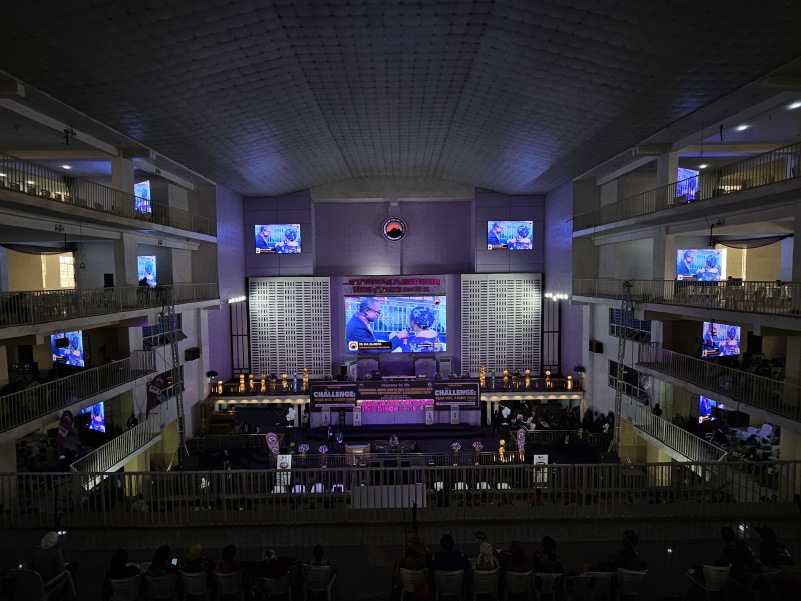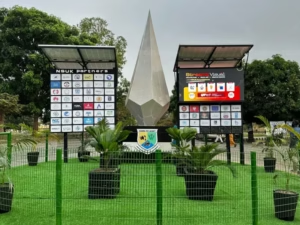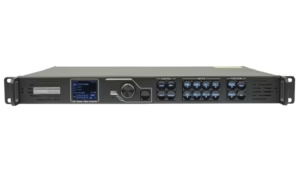Indoor LED Display Screen Buying Guide
Table of Contents
In today’s highly competitive business environment, LED display screens are no longer just a tool for playing pictures. It is also a “scene core” that enhances the texture of space, conveys brand information, and attracts the audience’s attention. Whether you want to display high-definition presentation content in a conference room, or create a visual atmosphere in a church, retail store, or hotel lobby, a suitable indoor LED screen can often bring unexpected visual impact and communication effects.
But buying an LED display screen is not as simple as buying a TV. From pixel pitch to resolution, from brightness parameters to installation methods, and even the quality and service system of each factory, it will affect your subsequent use experience and return on investment.
1. Clarify the usage scenario and viewing distance
The first step in selecting a screen is not to look at the parameters, but to see where you plan to use it. The requirements for LED screens in different scenarios vary greatly.
If you are doing close-range applications such as conference rooms, control rooms, and exhibition halls, you must pay attention to “high-definition and delicate”.
If it is installed in a church hall, school auditorium, or shopping mall atrium, the crowd is farther away, and the requirements for “screen size” and “brightness coverage” are higher.
This involves a key word: viewing distance. A simple calculation logic is
Optimal viewing distance ≈ dot pitch (mm) × 1000 ÷ 1000 = meters
For example, P1.25 indoor LED screen is suitable for viewing within 1.2~4 meters; while P2.5 products are suitable for viewing at a distance of more than 2.5 meters. If you choose the wrong one, it will either be “blurry picture quality” or “budget waste”.

2. The logic of matching pixel pitch and resolution
Many customers will be confused at the beginning: “Should I choose a smaller pixel pitch?” – This is actually a common misunderstanding.
Yes, the smaller the pixel pitch, the higher the resolution and the clearer the picture. But this also means that the more expensive the screen is, the greater the budget pressure. In fact, the key is not how expensive the product you bought, but whether you bought a resolution that “just meets the viewing needs”.
For example:
P1.25 indoor LED screen is suitable for playing high-definition videos and fine graphics, which is very suitable for conference rooms and TV stations;
P1.86 or P2.5 screens are more cost-effective in education, auditoriums, and retail.
In addition, you should also consider the type of content you display:
If you mainly play text and graphics, clarity is the priority;
If you play dynamic videos or stage shots, refresh rate and contrast are more important.
Keyword suggestions: indoor LED screen resolution, fine pitch LED display, P1.86 LED screen for church


3. How to judge whether the brightness of Indoor LED Display is sufficient?
Many people think that “indoors don’t need to be too bright”, but this is not true.
If the brightness of the LED display is too low, it is easy to “turn gray” or “turn white” in scenes with sufficient lighting, such as conference rooms and exhibition halls, and the content cannot be seen clearly.
It is generally recommended that:
For ordinary commercial spaces, it is recommended to choose Indoor LED Display with a brightness of 800~1200nits;
If the indoor space has strong natural light, consider models above 1500nits.
In addition, you should also pay attention to contrast and color consistency. These parameters directly determine whether your picture is “transparent” or “high-end”.
4. Installation and maintenance structure of Indoor LED Display
Do you plan to hang the LED screen on the wall or embed it into the wall? Do you need to reserve maintenance space? These questions will affect the screen structure you choose.
Common indoor installation methods include:
Wall-mounted: suitable for conference rooms and church background walls;
Embedded: more suitable for high-end exhibition halls and commercial spaces;
Lifting/vertical installation: mostly used in shopping malls and performance halls.
If you have limited space, it is recommended to give priority to Indoor LED Display with front maintenance structure. The module and power supply can be removed from the front, which makes later maintenance easier.
You can also ask us whether we support quick-install structures such as magnetic modules and wireless clips to greatly improve installation efficiency.




5. Choose the right Indoor LED Display brand to use it with peace of mind
Why do some quotations for LED screens with the same parameters differ by half? The core reason lies in the brand and factory capabilities.
A trustworthy Indoor LED Display brand should at least have:
Own factory to ensure the quality of core components such as modules, cabinets, power supplies, etc.;
Complete production/testing process (aging, calibration, anti-static, etc.);
Mature overseas delivery experience and customer cases.
If you are looking for a long-term supplier, you may want to learn about our Ehonor series Indoor LED Display, which is strictly controlled from material selection to packaging and shipment, and is trusted by customers around the world.
6. How to plan the budget for Indoor LED Display?
Price is an inevitable part of the purchase process. Indoor LED Displays with different pixel pitches, sizes, and configurations may have prices that differ by several times. So how should the budget be planned reasonably?
I suggest you split it up:
Basic hardware: modules, power supplies, cabinets, cables, etc.;
Control system: synchronous/asynchronous, redundant backup;
Structural installation: construction costs such as hanging, hoisting, and column installation;
Service guarantee: transportation, technical guidance, warranty period, etc.
We provide flexible Indoor LED Display configuration solutions that can meet basic needs as well as high-end customization options, suitable for customers at different budget levels.
7. Conclusion:
Purchasing Indoor LED Display is not just about comparing parameters and prices, but also about “who really understands your project needs”.
We hope that through this guide, we can help you avoid detours, save more budget, and truly choose a screen solution that suits your scene.
If you are still not sure how to choose, you might as well tell us your installation space, display content and budget. We can provide you with a free Indoor LED Display selection proposal to help you make the choice simpler and achieve the desired effect.
8. Recommend

Nits vs. Lumens: Why Your Projector Can’t Beat an LED Screen?
Nits vs. Lumens: Demystifying brightness. See why LED screens beat high-lumen projectors in daylight. Learn the key difference and choose the right display.

LED Video Processor Guide: Functions, Tips & Top Models
Learn how a led video processor enhances your screen. Explore functions, selection tips, and top Novastar VX vs Huidu VP recommendations.

LED Display Power Consumption Guide: Watts, Amps & Cost Calculator
Master led display power consumption calculations. Learn the real difference between Max vs. Average watts and save your budget.
